A still-multiplying array of streaming services continued to dominate the pop culture conversation in 2022, as movie theaters struggled to reach audiences post-pandemic and slouched evermore toward a dreaded Disney monoculture. The industry’s overreliance on abysmal superhero sequels and less-than-rock-solid franchise launches, plus its bizarre failure to put guaranteed crowd-pleasers like Prey, Fire Island, and Glass Onion in theaters, will hopefully make this a year of valuable lessons learned for Hollywood, rather than merely one to forget.
Doomsaying aside, there were bright spots to be found. One was that Tom Cruise kept his preposterously entertaining Top Gun: Maverick in theaters rather than allow it to be sold to a streamer, a hard line that possibly no other movie star could have taken, but which paid off in spades for Paramount. Not only did Maverick bring audiences back to theaters, grossing nearly $1.5 billion worldwide, but it was also a terrific film, with ace director Joseph Kosinski transforming the end of the ’80s, the impending obsolescence of its golden gods and the elegiac quality of our nostalgia for them, into the fuel propelling Cruise’s never-say-die fighter pilot through one last spectacular ride.
It was a great year for movies outside of Top Gun: Maverick, too… if you knew where to look, though no one can be blamed for missing several of the titles on this list, some of which went without theatrical releases or were screened only fleetingly in an increasingly difficult landscape for independent film.
Below are the 10 titles that carried me through 2022, plus a list of honorable mentions:

Armageddon Time
Revisiting the 1980s Queens milieu in which he was raised, the great American writer-director James Gray fastidiously recreates the sensations of that time and place, depicting in similarly vivid detail the fraught dynamics of his middle-class Jewish immigrant household. But Gray also charges this semi-autobiographical memory play with an agonized moral consciousness, evoking the larger systems of race and class, once invisible to him, that informed both the privileges he enjoyed and the guilt he still carries. From this wrenching collision of past and present emerges a work of towering personal and political introspection, Gray wrestling mightily with the moral compromises and contradictions of his own family, assimilated as both oppressor and oppressed. Casting Jeremy Strong as his helplessly pressurized father, Anne Hathaway as a tough-loving mother determined to help her sons get ahead, and Anthony Hopkins as the conflicted grandfather who urges young Gray surrogate Paul (Banks Repeta) to be a “mensch” even as he supports sending him to private school, Gray directs his actors precisely, to a place of earthy, explosive realism, while keeping us grounded in Paul’s subjectivity; this gives rise to the slow-dawning horror and tragic recrimination of the film’s latter half, in which Paul’s friend Johnny (Jaylin Webb), who is Black, pays the price for Paul’s hazy, preadolescent presumptions of innocence. Click here to read my full review.
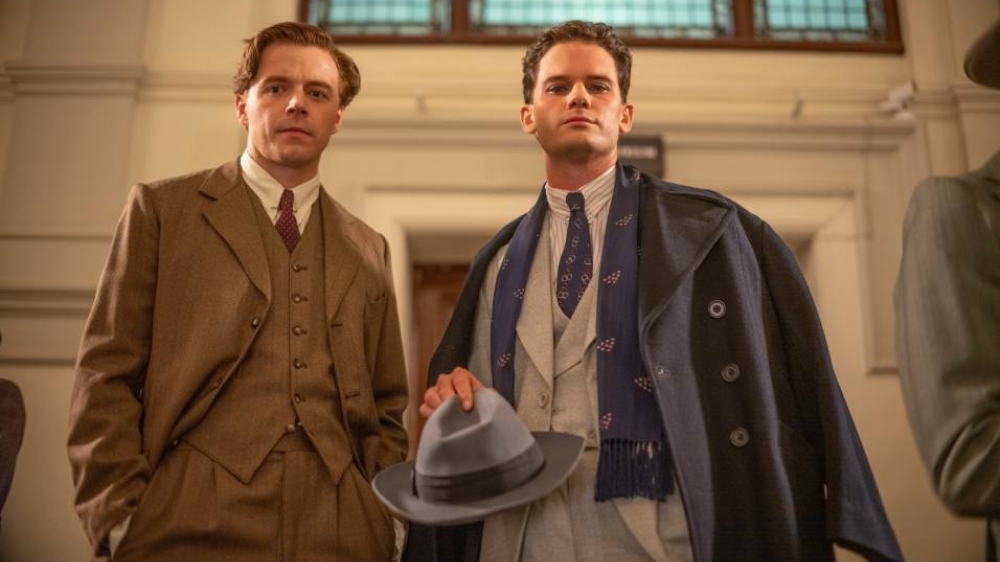
Benediction
Beyond merely revisiting the life of WWI poet Siegfried Sassoon, the legendary British cine-memoirist Terence Davies achieves an expressive fusion of biopic, autobiography, and classic melodrama in this emotionally seismic late-career achievement, marvelously scripted to capture the lyrical protest of Sassoon’s poetry and the agony beneath every word. A portrait of the artist as a man out of time and eventually devastated by its passage, Benediction exhumes not only Sassoon’s impassioned politics and painfully reserved emotional life — especially after the war, which instilled in him a terrible sense of failure — but those also of his inner circle. Actors and aristocrats whose cruel bon mots never quite concealed inner currents of isolation and rage, these sophisticates were Sassoon’s friends, lovers, and enemies; he shared their loneliness, a condition his later-in-life conversion to Catholicism only inflamed. Davies, a gay man and lapsed Catholic who’s spoken of struggles with his sexuality and faith, clearly feels a kinship with Sassoon — who’s played, in turns of devastating brilliance, by Jack Lowden as a fiercely controlled young man and Peter Capaldi as an older, wearier husk — and consequently sets this film in the vast, impressionistic chasms between memory, culture, and history — those of his life, Sassoon’s, and the national past they share.
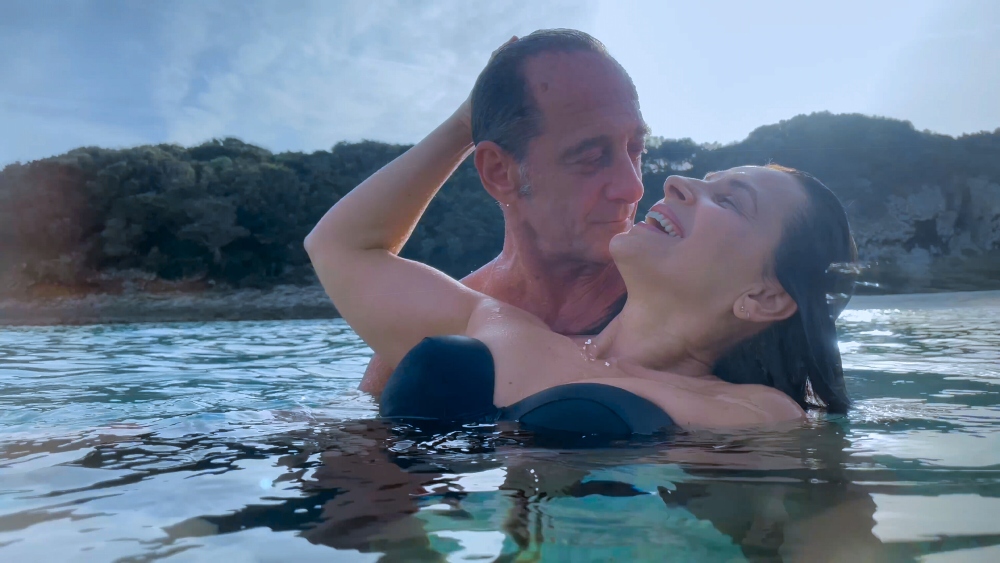
Both Sides of the Blade
Claire Denis‘ elliptical, apocalyptic update of French romantic melodrama features volcanic performances by Juliette Binoche, Vincent Lindon, and Grégoire Colin as three corners of a bruising love triangle. Only one of two thrilling works of genre extrapolation this year by Denis — the other being the sensuous literary adaptation Stars at Noon — Both Sides of the Blade has the edge for the way its overpowering sense of illicit desire lays bare unsettling realities of modern French society. Denis gets inside her characters, keeping the audience so close to their love and its dissolution that it’s possible to trace the shared and individual contours of their romantic and existential tensions. The confrontational nature of her gaze amplifies the intimacy of their violence, the pugilistic sparring over minute gestures and ill-considered turns of phrase. Denis leaves these lovers scorned and scorched, exhausted and yet also strangely energized by the specter of freedom they begin to sense beyond their fractious, self-annihilative discourse; an intensely political work whose protagonists gyre toward progress, Both Sides of the Blade burns down the house so that its characters can rise from the ashes.

Crimes of the Future
A work of provocative ideas and impulses that erupt uncontrollably from deep inside, David Cronenberg‘s rich Crimes of the Future finds the Canadian writer-director in conversation with his own body of work, reflecting on decades of obsession with the evolving intersections of human anatomy and technology. In near-future Athens, performance artists Saul Tenser (Viggo Mortensen) and Caprice (Léa Seydoux) make an electrifying live show of surgically removing the organs Saul’s body can’t stop growing. Monitored by bureaucrats (Kristen Stewart and Don McKellar) who are titillated by what they see, Saul and Caprice operate within a shadowy vestige of the art world, against crumbling societal structures that cinematographer Douglas Koch lights in Renaissance tableaux of metamorphosis and decay. Ultimately a vision of transcendence through transformation, Crimes of the Future is also darkly hilarious and persuasive about the roles pain and pleasure have to play in artistic triumph.
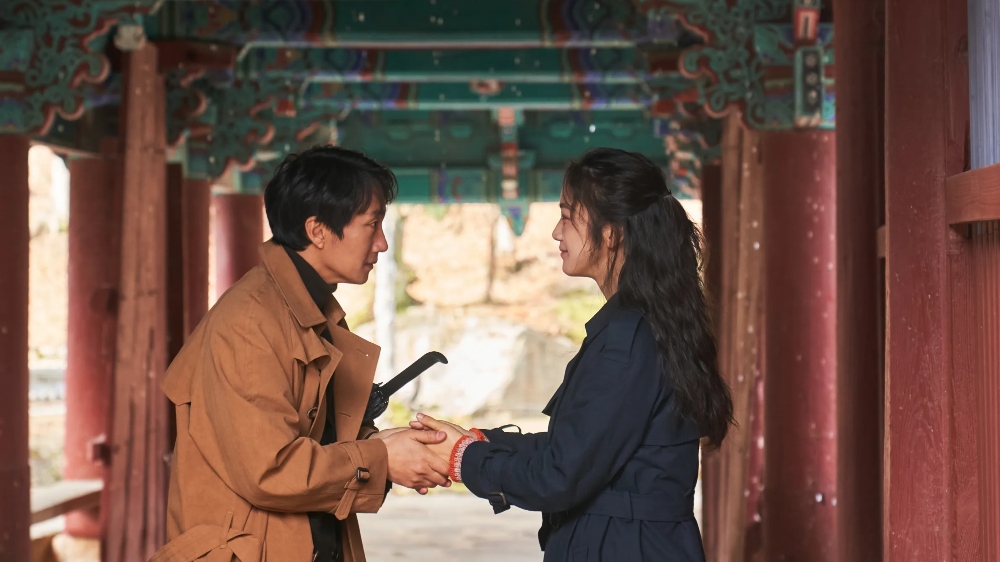
Decision to Leave
As formally ravishing as it is precisely controlled, Park Chan-wook‘s romantic noir is a film of raging, passionate contrasts — between investigation and obsession, truth and emotion, fantasy and reality, desire and its imperfect translations — embodied through striking visual symmetries. Mountains and seas, gleaming one-way mirrors and darkened iPhone screens, eye drops and mist, dresses that shimmer blue or green — Park shrouds this story, about a seasoned detective (Park Hae-il) falling under the spell of his murder suspect (Tang Wei), in an almost elementally lurid mood of ambiguity, befitting its fascination with the allure of opacity and the limits of observation. Delivering two of the year’s most mysterious compelling lead performances, actors Tang and Park turn an interrogation sequence — brilliantly mirrored through director Park’s exacting shifts in focus — into a sly seduction, their strange connection intensifying with every projected motion, glance, and gesture.

God’s Country
Criminally overlooked by awards bodies thus far (with the exception of the Gothams), Thandiwe Newton gives a career-best performance in Julian Higgins‘ gripping neo-Western, a film of unusual savagery and poetic force that has lingered with me since its debut early in the year at the all-virtual Sundance Film Festival. As a college professor who must contend with the trespasses of two hunters on her property, Newton — working from a potent, simmering script by Higgins and Shaye Ogbonna — navigates the embedded social, historical, and racial tensions of the American West, and its cinematic depictions, with a formidable grit and grace that hardens into something colder and inescapable as the film progresses. Set in a barren sweep of the Montana wilderness, this is a darkly exhilarating film, a reckoning with American cycles of violence and escalation that’s most haunting in its close-ups of Newton in all her unyielding fortitude and despair.
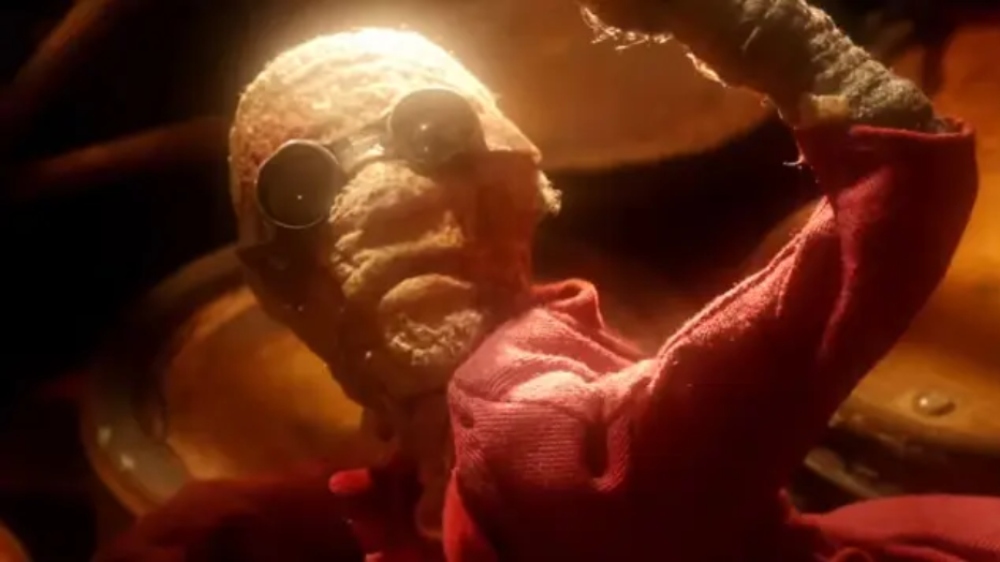
Mad God
2022 was a banner year for horror all over. But, as genre aficionados already know, Shudder — AMC Networks’ horror-centric streaming service — remains the premier destination for ambitious, spine-tingling titles. Its recent slate of originals has been second-to-none, from psychological thrillers Resurrection and Watcher, which elevated explorations of feminine paranoia and trauma with incendiary lead performances (by Rebecca Hall and Maika Monroe, respectively), to genre-bending international gems, like propulsive Senegalese Western-horror hybrid Saloum and pitiless Danish social satire Speak No Evil. But with Mad God, the 30-years-in-the-making magnum opus of stop-motion titan Phil Tippett, Shudder unleashed a masterpiece. Cruel, corrosive, and teeming with subterranean terrors, this infernal descent into the bowels of an irradiated wasteland is a mind-altering sensory experience like no other. Overpopulated by grotesquely deformed creatures and ruined cities, the underworld of Mad God is a true steampunk nightmare: steeped in Jungian symbology, drenched in bodily fluids, beholden to no narrative logic other than the steadily deathward progression devised by its creator’s artistic unconscious.

No Bears
Through his radically, reflexively defiant cinema, renowned Iranian auteur Jafar Panahi has mounted a series of increasingly intricate and outraged artistic challenges to the censorship and political interference levied against him by an oppressive regime. No Bears — the last film he finished before being detained and jailed by the Iranian government — is yet another work of metaphorically rich, formally canny auto-critique on the level of 2011’s This Is Not a Film and 2015’s Taxi. Panahi himself plays a filmmaker barred from leaving Iran, who has traveled to a village near the border in order to remotely direct a movie set in Turkey; his own constricted freedom is only one source of inspiration in No Bears, which is dense with inspired, provocative insights on the moral power and isolation of artistic freedom, Iran’s cultures of confinement and the fear enforcing their longest-held traditions, and the troublesome, truth-telling possibilities of filmed images.

Nope
Jordan Peele revels in the outsized surreality of sci-fi screen spectacle throughout this ingenious and cathartic big-picture critique of moviemaking, capturing some of the most instantly iconic shots of his career even as he reveals the process of “getting the impossible shot” as its own absurd pursuit: equal parts courage, hubris, and exploitation. Following the efforts of two horse-wrangling siblings — descendants of the Black horse jockey seen in Eadweard Muybridge‘s “Horse in Motion” — to film the UFO stalking their Agua Dulce ranch, Nope is breathtakingly vast in scope — visually, with Hoyte van Hoytema‘s cinematography making unprecedentedly intimate use of IMAX cameras, but also spiritually, historically, and politically; it takes as its core subject the ethical considerations and limitations of image-making and explores how both inform our dangerous cultural obsession with, short of knowing, at least showing the unknowable.

Petite Maman
A more enchanted affair even than her ravishing period romance Portrait of a Lady on Fire, Céline Sciamma‘s exquisitely crafted film miniature slips out of time to conjure another secret world where two women can encounter and embrace one another freely. When eight-year-old Nelly (Joséphine Sanz), grieving the loss of her grandmother, accompanies her mother to clear out their family home, she meets another young girl, Marion (Gabrielle Sanz), playing in a nearby forest. Caught in the rain, Nelly follows her new friend home, only to be led back toward the same house she left, decades earlier; so begins a warmly autumnal fairy tale, the girls coming to terms with their newfound awareness of life’s transience, even as they grow sensitive as well to the magical bonds between mothers and their daughters. Akin to Hayao Miyazaki‘s My Neighbor Totoro in its gentle sadness and cozy charm, Petite Maman is a similarly precious and timeless work, a small-shimmering jewel of a film.
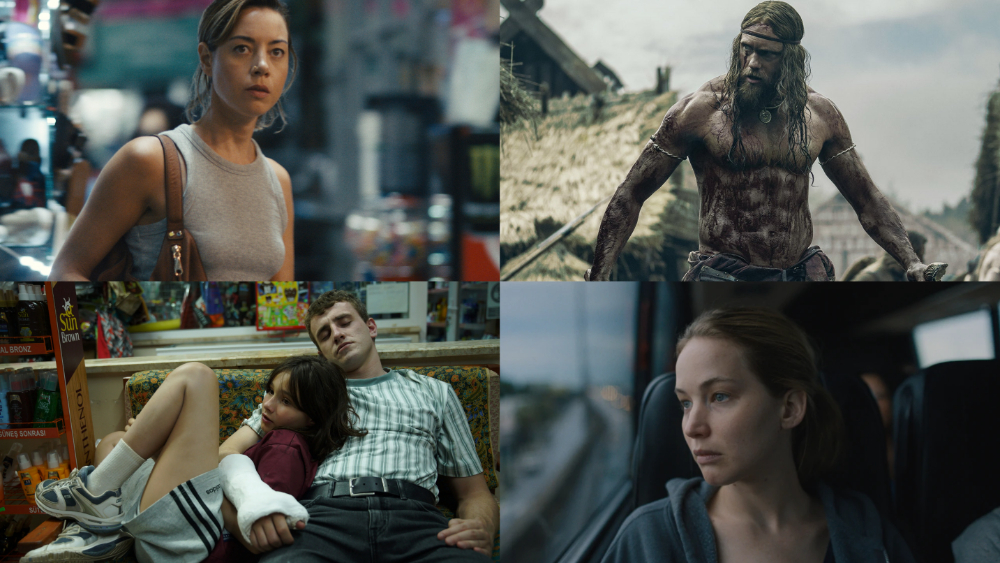
Honorable mentions: Aftersun, After Yang, All that Breathes, All the Beauty and the Bloodshed, Ambulance, Apollo 10 ½: A Space Age Childhood, Bones and All, The Cathedral, Corsage, Causeway, Dark Glasses, Dos Estaciones, Emergency, Emily the Criminal, EO, Everything Everywhere All at Once, Fire Island, Fire of Love, The Girl and the Spider, God’s Creatures, Great Freedom, Halloween Ends, Happening, Hit the Road, Hold Me Tight, Living, Marcel the Shell with Shoes On, Master, Murina, Nanny, Nitram, The Northman, One Fine Morning, Pearl, Piggy, Pleasure, Prey, Resurrection, RRR, Stars at Noon, Strawberry Mansion, Tantura, TÁR, Three Minutes: A Lengthening, To Leslie, Top Gun Maverick, The Tsugua Diaries, We’re All Going to the World’s Fair, X, You Won’t Be Alone
For more of Isaac Feldberg’s film reviews from this past year, click here. And click here to read J. Don Birnam’s top 10 favorite films of 2022 on Below the Line.



